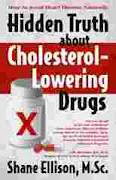According to the Center for Disease Control and Prevention (CDC) in the United States, nearly 40 per cent of it’s population is obese. The number of obese children have tripled over the last 2 decades.
Despite the exhortations of different health experts to eat less and exercise more, millions of people in industrialized nations have been getting fatter. Latest figure show that more than half the adult population is overweight, and about one in five is obese. Basically speaking, this means that one out of three of you reading this, is technically overweight or obese.
Obesity is simply an excess of fat deposit in our body cells. When deposited as a high risk abdominal fat, they make the body resistant to the effect of insulin causing it’s level in the blood to rise. Raised insulin can lead to high blood pressure, raised blood lipids and increase in blood sugar level. And all this indicates greater risk of coronary heart disease.
Are you at risk?
There are several ways of knowing and measuring obesity- Body mass Index (BMI). This is commonly used to measure your weight relative to your height. That is by taking your weight in kilogram and dividing it by the square of your height in meters
i.e.:
BMI = Weight (kg)
Height (m)2
An individual weight is commonly classified this way:
Less than 25 - Healthy
25 – 30 - Overweight
Over 30 - Obese
So the greater the BMI, the higher the risk of developing heart disease. About 70% of heart disease cases in the United States are linked to excess body fat.
Why are we getting fatter?
That’s a one million question we have to ask ourselves. In our modern society, the wide availability of energy-dense food in large portion combine with the fact that we are less active in exercise has resulted in our getting fatter everyday. Moreover, a good deal of our meal has been based around fast foods like burger, pizza and chips instead of fruits and vegetables. Obesity thus can be regarded as a chronic energy imbalance, in which intake exceed expenditure and excess energy is stored as fat.
You may ask why some people put on wight easily while others can eat anything they want and never gain an ounce of weight. In this case, it can be genetically influence whereby obesity runs in the family. Children with obese parents have at least 60% chance of becoming obese compared with less than 20% in children of lean parents. Other factors may be social, psychological or can be a medical disorder and drugs.
You can choose any type of weight loss plan you like but make sure you create a sensible energy balance of around 500 -600 calories per day. Regular exercise is highly recommended to maintain this daily. The type of exercise is not important provided it stimulates the heart and body circulation sufficiently. Any activity like jogging, walking, running, dancing, swimming, aerobics, cycling or gym work out will definitely help put off CHD at any rate.
So, it’s clear that physically active people have only half the risk of heart attack compared to sedentary ones.
Not only will physical exercise lower your risk of coronary heart disease, it will also give you a stronger and well conditioned heart.
To learn more about obesity and heart diseases Call 1-800-AHA-USA1 (1-800-242-8721) or visit http://www.americanheart.org
Knowledge is power, so Learn and Live!
Obesity and Heart Disease
8:44 PM | Body mass Index, Coronary Heart Disease, drugs, heart disease, Overweight, weight loss | 0 comments »
Subscribe to:
Post Comments (Atom)





0 comments
Post a Comment